 English
English
 English
English
Is the pump used for brewing the same as a regular water pump? Does it guarantee food safety? I would like to share a little bit of knowledge on this subject.
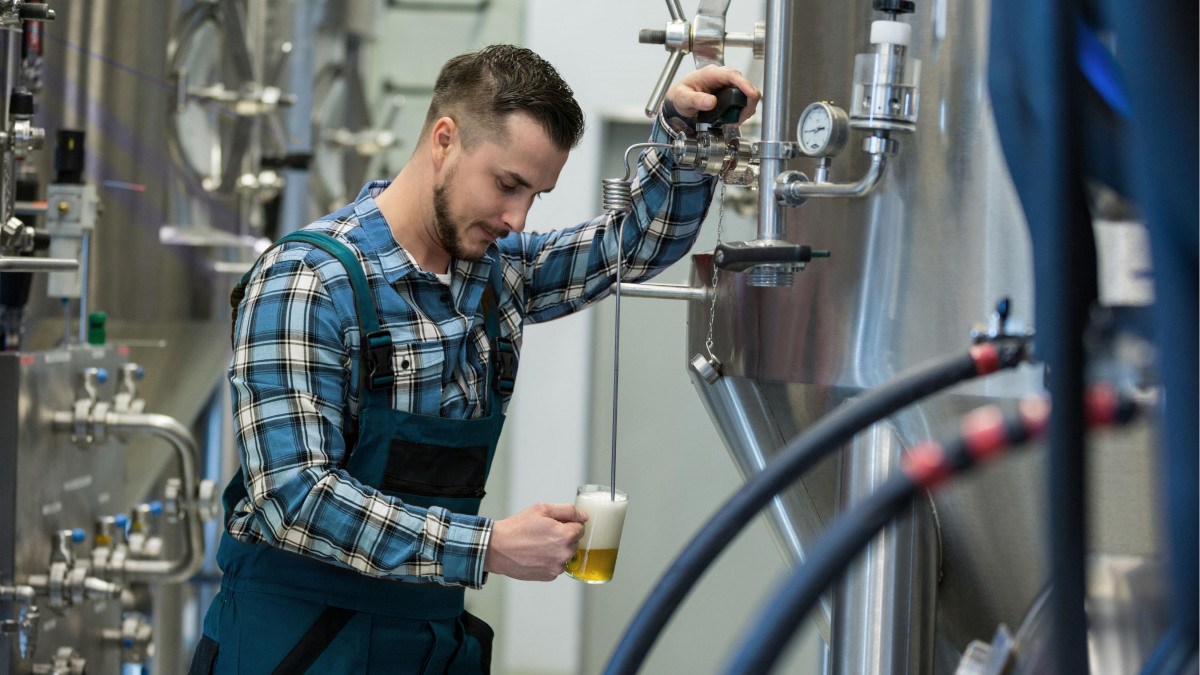
Beer industry develops in Vietnam market
Beer is such a familiar and popular drink, but do you know how the drinks you drink every day are produced by them? Does it guarantee food safety? I would like to share a little bit of knowledge on this subject.
Beer and beer drinking are social activities that have become part of the human experience seemingly since the dawn of civilization, dating back to the fifth millennium BC, with historical records history from ancient Egypt and Mesopotamia. back a few thousand years ago, when humanity started moving away from the nomadic hunter/gatherer life and towards settling in one place to farmland Grain, an important ingredient in brewing, then cultivated by these new agrarian societies.
Today, beer is one of the oldest beverages that man has ever produced and has spread around the world. It is a valuable product for its physico-chemical properties as well as its quality and its traditional connection with cuisine and national character.
Accordingly, the history of the brewing industry is not only one of scientific and technological advances but also the story of people themselves in their self-governance, economics, etiquette and daily lives. , in addition to the growing demand of the cereal market.
Since virtually any cereal containing certain sugars can undergo spontaneous fermentation by wild yeast in the air, it is possible that the beer-like beverage was independently developed. around the world shortly after a tribe or culture domesticated grain Historical finds in various parts of the World indicate that beer was in fact brewed 7,000 years ago finds one of the earliest known uses of fermentation and the earliest evidence of brewing to date; contains the oldest surviving beer recipe; describes the process of making beer from barley through bread Some other records also show that beer is brewed with barley and other grains Therefore, the invention of bread and beer is believed to be the cause of mankind's ability to develop technology and build civilization.
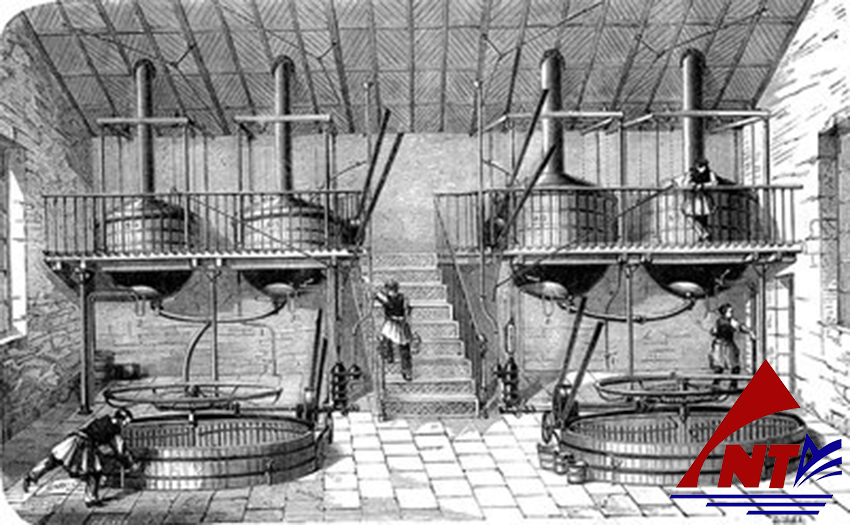
Craft beer factory
During the Industrial Revolution (~18th - 19th centuries), beer production shifted from craft to industrial production Brewers devised a set of standards for beer and began to popularize brewing mass production, instead of home production, which was no longer important by the end of the year. of the 19th century These instructions and methods of mass production quickly spread throughout Europe
The development and advent of scientific tools such as hydrometers and thermometers have also changed the art of brewing by allowing brewers more control over the process along with better knowledge. about the results
In North America and many other parts of the world, the brewery market has had some 'disruptive changes' over the past 5 years with an explosion of smaller craft beers now favored by the next generation. Millennium. This trend has actually led to larger brewing companies (such as Anheuser- Busch InBev [AB InBev] and SABMiller) closing their older larger breweries and buying up smaller craft rivals. their
Today, the global brewing industry is still a thriving business, consisting of several dominant multinationals and many thousands of smaller microbreweries (smaller than 15,000 barrels of US beer). and nano breweries to regional breweries with a total global production of more than 1 93 billion hectoliters (51 billion US gallons) in 2015
Beer is the product of alcoholic fermentation using yeast extracts of malted barley. While the applied chemical feedback between the malt and the yeast contributes to the beer's distinctive character and flavor, its quality is still a function of the water and, more importantly, of the hops used in the brewing process. manufacture.
Most of the sugars that make up the alcohol in the world's great beer come from barley starch. It is enclosed in the cell walls and proteins inside the barley, and these layers are removed during the malting process (essentially the germination mode of the rice grain), leaving the starch safe.
In the traditional brewing of beer, beer is combined with hops, certain types of pipes, and glass clock findings from fish that wade upstream of certain fish species, which settle into the liquid. solid in the barrel. In traditional lager brewing, green beer 'is aged for several weeks of storage before filtration
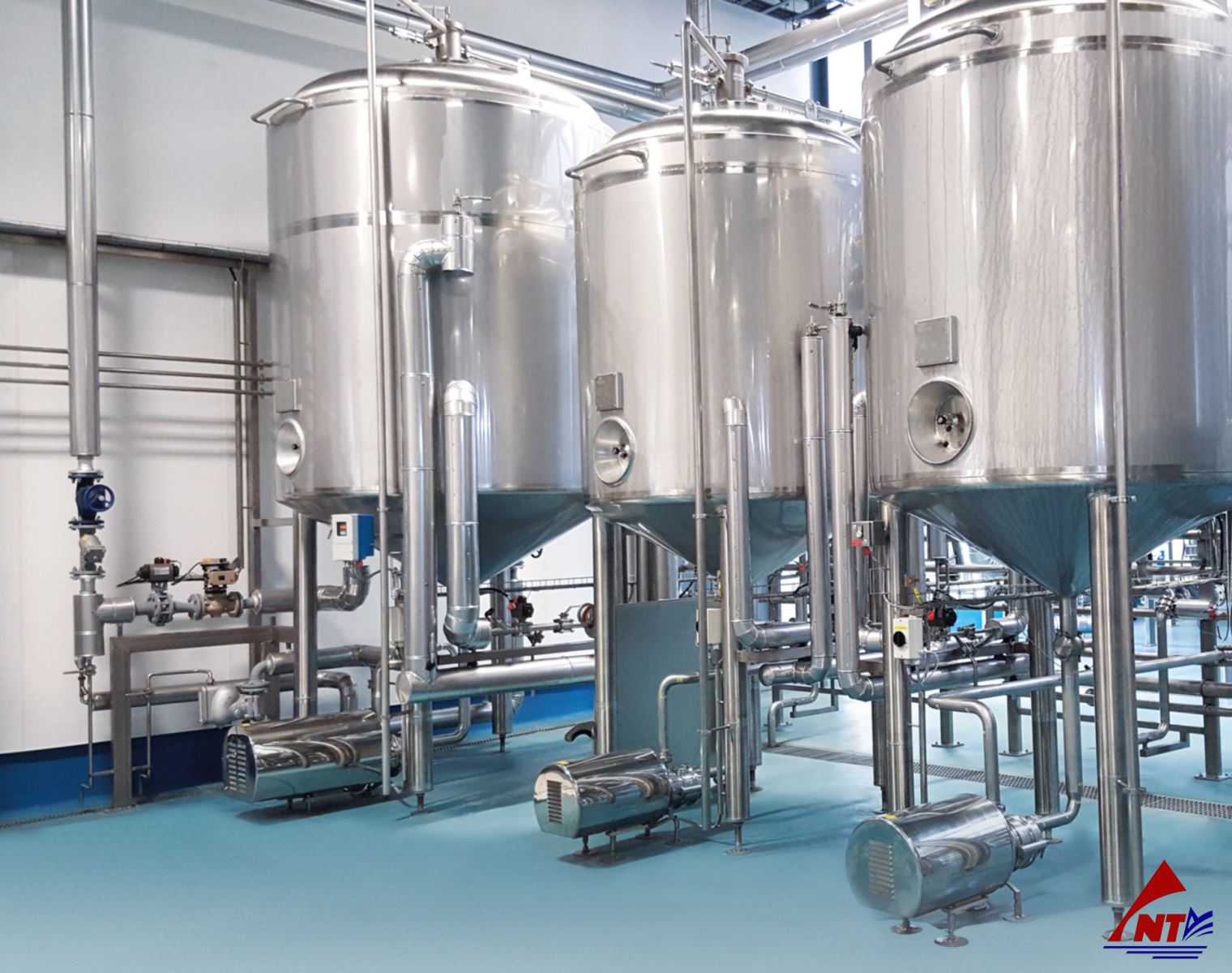
Industrial beer factory
Today, the majority of beers, both ale and ale, are time-conditioned for a short period of time after fermentation and before filtration. This process is ideally done at -1°C (302°F) for a minimum of three days, under which conditions the protein falls out of solution, making the beer less prone to defects in the packaging or glass. Beer has been adjusted to the required carbonate before packing it into cans, kegs, glass or plastic bottles
In the brewery usually 3 main types of pumps are used:
a) Centrifugal pump
b) Peristaltic Pump
c) Diaphragm Pump
In which centrifugal pump is the most widely used and popular in all breweries in the world.
Centrifugal pumps are the most common type of pump used in the Beer Pump industry as they are particularly useful for conveying and filling applications in bottling and capping.
It is important to ensure that your pump is a Hygienic Centrifugal Pump and not a standard Water Centrifugal Pump. This ensures you are using the most hygienic pump available for a product that people will use in the end.
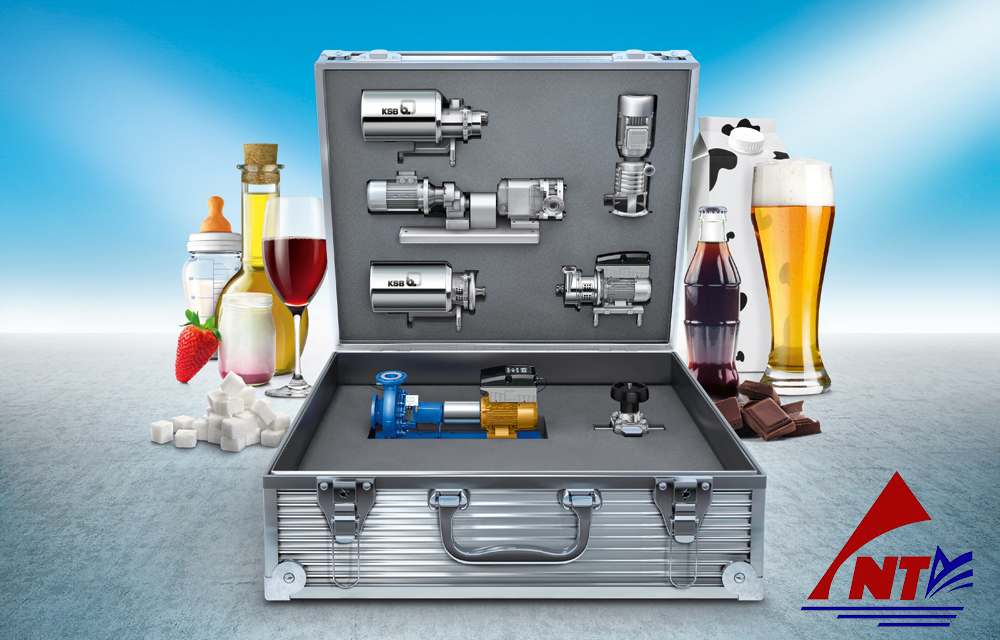
Centrifugal pump for beer industry
Hygienic centrifugal pumps are electrically controlled, can reach temperatures up to 90°C (180°C if you require a centrifugal pump with a long coupling) and are manufactured from AISI Stainless Steel 316L with electronic polishing surface Ra < 0.8.
The hygienic centrifugal pump is a type of centrifugal pump that maintains product purity without the risk of contamination. This type of pump is easy to clean, has a smooth internal finish to prevent bacterial growth and does not contribute any impurities to the process.
Sanitary centrifugal pumps look quite different from industrial centrifugal pumps in terms of material, at least stainless steel. Surface finish will be in the range of 0.8μm or better depending on process requirements. Some hygienic centrifugal pumps are manufactured with a mirror finish. They are usually capable of being CIP (Clean In Place) or SIP (Sterilize In Place), specifically referred to as CIP Pumps or SIP Pumps.
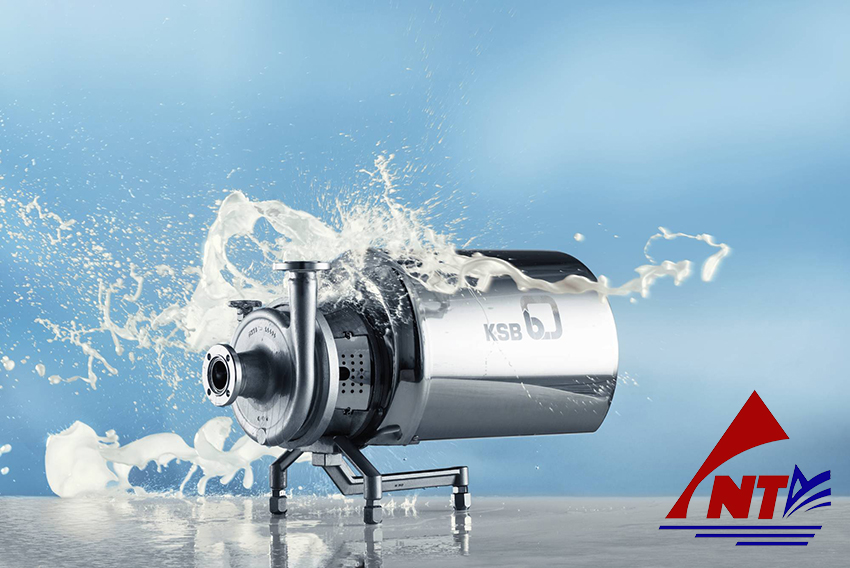
Hygienic pump
Additionally, they can be ATEX rated for use in hazardous areas and used for applications such as pressure boosting, tank cleaning and dispensing, rather than the typical application of transferring between tanks. contain.
There are different types of connections depending on user and/or application preferences. They are welded to the pump housing and must be appropriately cleaned after welding, i.e. grinding, smoothing, passivating and polishing. By passivating the material (stainless steel) you are strengthening the rust protection.
In order to ensure that the hygienic pump provides safe beer product during operation, and to ensure the health of the consumer during the production process, the sanitary pump normally meets the following conditions:
 So what is the FDA? The FDA, or federal Food and Drug Administration, is the federal agency that regulates many types of consumer products, but for this blog post, we'll only discuss one important area (actually). Products). The FDA has primary authority over all foods sold in the United States. Food is broadly defined and can range from items like cookies to bread, pasta to juice. Furthermore, the FDA has the authority to ensure that all food items sold in the market are safe and appropriately labeled. In general, FDA regulates food safety and has the authority to act on adulterated food products, including alcoholic beverages, both domestic and imported.
So what is the FDA? The FDA, or federal Food and Drug Administration, is the federal agency that regulates many types of consumer products, but for this blog post, we'll only discuss one important area (actually). Products). The FDA has primary authority over all foods sold in the United States. Food is broadly defined and can range from items like cookies to bread, pasta to juice. Furthermore, the FDA has the authority to ensure that all food items sold in the market are safe and appropriately labeled. In general, FDA regulates food safety and has the authority to act on adulterated food products, including alcoholic beverages, both domestic and imported.
3.2. ACS (Attestation de conformité sanitaire)
 Since 1997, French regulations state that all materials and objects (assembled products) that come into contact with human water "must conform to the characteristics of human water". To do this, they must have a Certificate of Hygiene Conformity (ACS) issued by the Ministry of Health in France. This is a regulatory constraint that all suppliers must follow.
Since 1997, French regulations state that all materials and objects (assembled products) that come into contact with human water "must conform to the characteristics of human water". To do this, they must have a Certificate of Hygiene Conformity (ACS) issued by the Ministry of Health in France. This is a regulatory constraint that all suppliers must follow.
3.3. USP Standard (The U.S. Pharmacopeial Convention)
 Is a non-profit organization that creates standards for drugs, food ingredients, dietary supplements, and healthcare technology. USP publishes biocompatibility protocols for plastics and polymers used in medical devices or surgical devices, which may come into contact with human tissue.
Is a non-profit organization that creates standards for drugs, food ingredients, dietary supplements, and healthcare technology. USP publishes biocompatibility protocols for plastics and polymers used in medical devices or surgical devices, which may come into contact with human tissue.
USP Class VI refers to one of six designations for plastics from General Chapter <88> of the United States Pharmacopeia and National Directory (USP-NF). This chapter provides guidance on testing and certifying materials used in medical devices.
3.4. The European Hygienic Engineering & Design Group (EHEDG) Standard
 Is a global network of equipment manufacturers, food processing companies, research institutes and public health authorities, founded in 1989 with the aim of promoting hygiene in the manufacturing process. , processing and packaging of food products.
Is a global network of equipment manufacturers, food processing companies, research institutes and public health authorities, founded in 1989 with the aim of promoting hygiene in the manufacturing process. , processing and packaging of food products.
The hundreds of EHEDG certified components and series of devices illustrate that the importance of EHEDG equipment testing and certification has been recognized worldwide. The worldwide network of EHEDG Testing Laboratories provides professional, fast and reliable testing procedures that help food processing equipment developers optimize their products and raise standards. on food safety, quality, productivity and sustainability in food production.
 The ATEX Directives are two EU directives that describe the minimum safety requirements for workplaces and equipment used in potentially explosive environments.
The ATEX Directives are two EU directives that describe the minimum safety requirements for workplaces and equipment used in potentially explosive environments.
The ATEX directive 2014/34/EU covers protective equipment and systems designed for use in potentially explosive atmospheres. The directive defines essential health and safety requirements, as well as conformity assessment procedures, to be applied before the product is placed on the EU market. This policy is consistent with the new legislative framework policy and has been in effect since 20 April 2016, replacing the previous Directive 94/9/EC.
You can refer to some hygienic pumps that meet the standards for the beer industry here:
https://ksbvn.com/en/category/ksb-pump-hygienic-pump
Hanoi 04.09.2021- Posted by Mr. Water
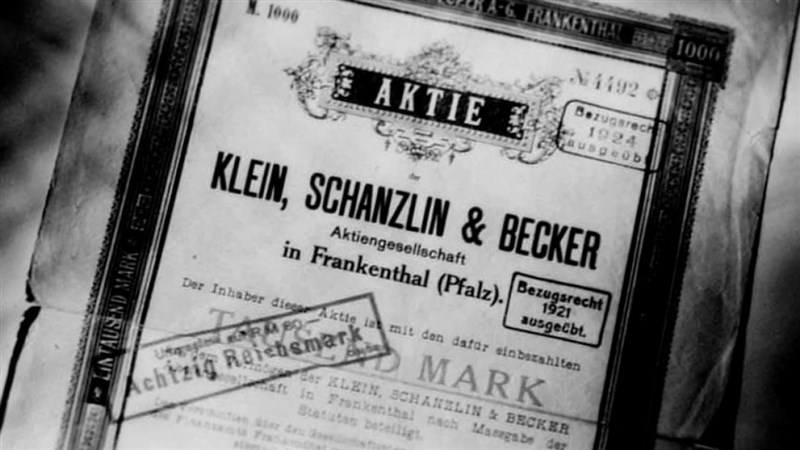
0964633986
Từ khóa tìm kiếm:
|
NTA PUMP ENGINEERING COMPANY LIMITED C4 Vu Ngoc Phan str, Lang Ha ward, Dong Da Dist, Hanoi city. |